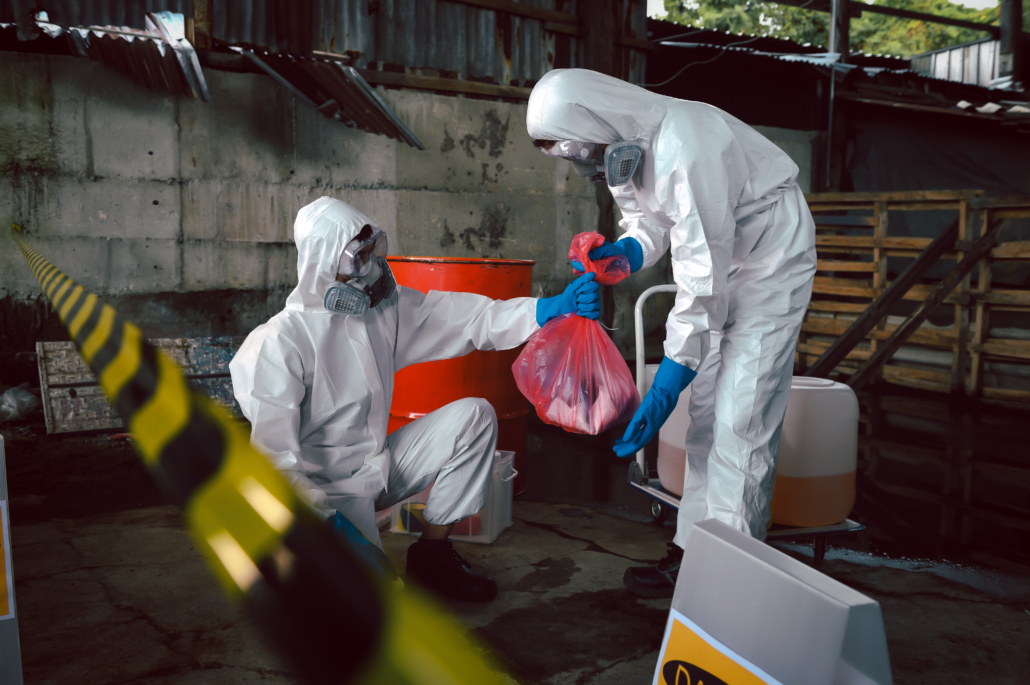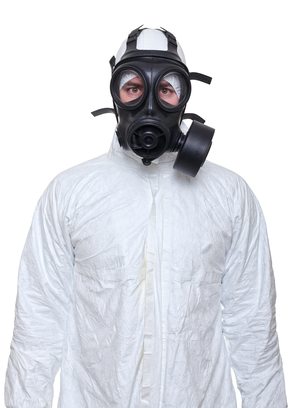Biohazard Removal: Safe Handling and Disposal of Hazardous Products
Biohazard Removal: Safe Handling and Disposal of Hazardous Products
Blog Article
Expert Biohazard Cleansing and Purification for Blood, Bodily Fluids, and Hazardous Products
The potential wellness risks linked with exposure to biohazards emphasize the essential requirement for meticulous handling and comprehensive cleaning. As we browse the detailed landscape of biohazard clean-up, comprehending the nuances of policies, compliance, and the customized equipment at play becomes important in making sure a safe and detailed decontamination process.
Wellness Dangers of Biohazard Exposure
Exposure to biohazards poses significant wellness threats that can cause severe consequences for individuals and communities alike. Biohazards include a vast array of organic compounds, including blood, bodily fluids, mold and mildew, germs, viruses, and other potentially infectious materials. When people enter call with these biohazards, whether through mishaps, incorrect handling, or environmental direct exposure, they deal with the risk of having significant health problems or diseases.
Among the key health risks connected with biohazard direct exposure is the transmission of infectious illness. Bloodborne pathogens such as HIV, hepatitis B and C, and numerous bacteria can be existing in biohazardous materials, posing a direct risk to human wellness. Inhaling airborne biohazards like mold spores or entering contact with polluted surfaces can additionally cause respiratory system issues, allergies, and other negative wellness impacts.
In addition, biohazard direct exposure can have lasting health effects, with some illness materializing years after the initial get in touch with (Blood Cleanup). Consequently, it is important to focus on correct biohazard cleansing and decontamination to alleviate these wellness dangers and make certain the safety and security of people and communities

Specialized Training for Biohazard Cleaning
When it involves handling biohazard cleaning efficiently and securely, specialized training plays a fundamental function in ensuring appropriate purification procedures are complied with. Biohazard cleaning needs particular understanding and skills to effectively reduce risks related to bloodborne virus, physical liquids, and unsafe materials. Specialists learnt biohazard cleaning undergo extensive direction on how to securely handle, get rid of, and deal with biohazardous products to avoid contamination and exposure.
Specialized training for biohazard clean-up covers a series of essential topics, consisting of proper personal protective devices (PPE) usage, bloodborne microorganism understanding, decontamination techniques, and contaminated materials disposal protocols. People learnt biohazard cleanup are geared up with the required competence to evaluate contamination levels, identify possible hazards, and execute appropriate clean-up procedures in compliance with regulative requirements.
Continual training and education are critical in the area of biohazard clean-up to remain updated on the most recent purification innovations, safety methods, and laws. By purchasing specialized training, biohazard cleanup professionals can properly react to emergency cleaning scenarios and guard both public wellness and the environment.
Relevance of Appropriate Decontamination Methods
Utilizing proper purification techniques is essential in biohazard cleanup to effectively remove harmful products and minimize wellness dangers. Effective decontamination not just ensures the elimination of visible traces of blood, physical liquids, and other biohazards yet also targets invisible microorganisms that may pose serious wellness dangers otherwise appropriately eliminated. By following stringent purification protocols, educated experts can substantially lower the risk of exposure to hazardous microorganisms, infections, and microorganisms that might lead to conditions or infections.
Proper decontamination methods include the use of specific tools and disinfectants that are particularly created to counteract biohazards efficiently. Extensive cleaning and sanitation of contaminated areas are vital to stop the spread of virus and guarantee a safe environment for occupants. Furthermore, the correct disposal of biohazardous waste adhering to decontamination treatments is vital in preventing contamination of various other surface areas or people.

Devices and Tools for Safe Clean-up
When dealing with blood, bodily liquids, or unsafe products, biohazard cleansing professionals count on specialized equipment to decrease exposure risks and extensively decontaminate the damaged location. In addition, biohazard cleansing kits having disinfectants, absorbing materials, and biohazard bags are made use of to securely get rid of and have of polluted things.
Advanced cleansing devices like hospital-grade anti-bacterials, HEPA-filtered vacuums, and fogging machines are used to sterilize surfaces and eliminate biohazards efficiently. Specialized devices such as sharps containers and biohazard waste disposal bins are used to safely take care of sharp things and biohazardous waste products. By making use of the ideal click reference tools and devices, biohazard cleansing experts can ensure a comprehensive cleanup procedure that prioritizes safety and lessens wellness threats for both employees and residents of the affected space.
Rules and Compliance in Biohazard Cleaning
Proper adherence to policies and conformity criteria is vital in biohazard cleansing to ensure the safety of both workers and the atmosphere. Federal government agencies such as OSHA (Occupational Security and Health And Wellness Management) and the EPA (Epa) have developed specific standards for biohazard helpful resources clean-up treatments to lessen wellness risks and ecological contamination. These policies cover a range of aspects consisting of the handling, transportation, and disposal of biohazardous products, along with the essential training and safety devices required for workers associated with the cleanup procedure.
Biohazard cleaning firms need to remain current with these guidelines to guarantee that their operations satisfy the required security standards. Failing to conform with these guidelines can cause serious consequences, including fines, legal activity, and threatening the wellness of people and the atmosphere. By following strict laws and compliance measures, biohazard cleansing companies can efficiently minimize dangers and ensure a secure and detailed clean-up procedure for all events entailed.
Conclusion
To conclude, biohazard cleansing and decontamination call for specific training, appropriate methods, and adherence to regulations. Exposure to blood, physical liquids, and unsafe materials postures considerable wellness risks, making it critical to utilize the right tools and tools for risk-free clean-up. By following strict procedures and standards, professionals can effectively reduce the threats connected with biohazard exposure and guarantee the safety and security of both themselves and others.
As we navigate the detailed landscape of biohazard cleaning, recognizing the subtleties of guidelines, compliance, and the specific equipment at play becomes necessary in guaranteeing a secure and detailed purification procedure. (Blood Cleanup)
When it comes to handling biohazard cleaning successfully and securely, specialized training plays a basic role in making sure appropriate decontamination treatments are complied with.Utilizing correct decontamination strategies is critical in biohazard cleanup to efficiently decrease and get rid of harmful materials health risks. In addition, biohazard cleansing packages consisting of disinfectants, absorbent products, and biohazard bags are utilized to securely dispose and Read More Here contain of infected products.
Government agencies such as OSHA (Occupational Safety and Health Administration) and the EPA (Environmental Defense Firm) have developed details guidelines for biohazard clean-up procedures to lessen health and wellness risks and ecological contamination.
Report this page